Vivo has launched in India one of their newest smartphones, sporting a 6.41-inch Full HD+ display, dual rear cameras, in-display fingerprint scanner, and powered by a Qualcomm Snapdragon 660 chipset – the Vivo V11. Check out our review of the device below.

Author’s note: The unit we received for review is from Vivo Global. Therefore some aspects of this device might be different from the one that will retail in the Philippines.
Table of Contents
One of the things I noticed about the V11 is its resemblance to the X21 UD. It almost has the same shape and design, placement of the buttons and cameras, even the material used. If you put them side-by-side, you won’t immediately notice the difference unless you look closely at the display.
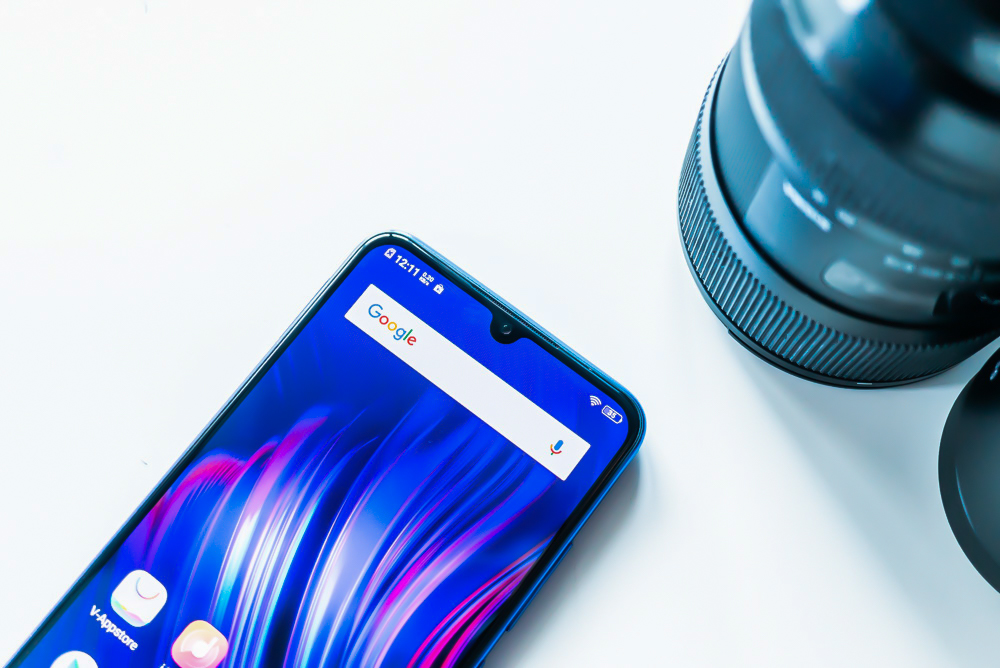
The Vivo V11 sports a slightly larger screen at 6.41-inches. It has a Full HD+ resolution (2340 x 1080) or 402ppi, which is a good resolution for a screen of this size. Also located here is the 25MP camera, the earpiece that is cleverly hidden in the top bezel, and the in-display fingerprint scanner. It works well however, it is slow and needs a full second to unlock the device. At this point, we prefer using the face unlock feature which is faster.
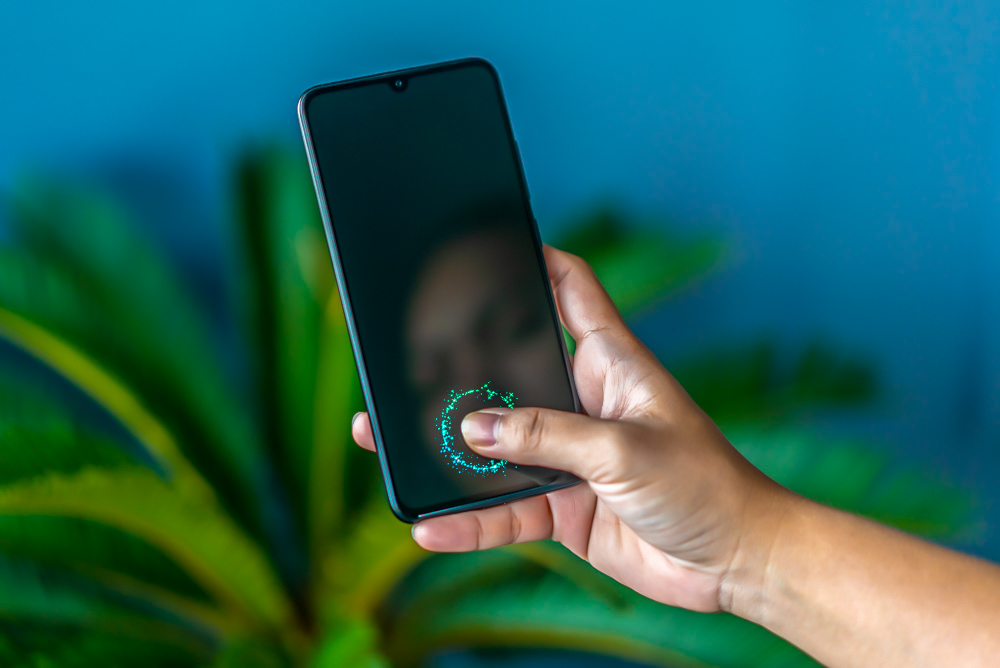
Going over to the rest of the exterior, we have the volume and power/lock button on the right side. They’re firm, clicky, and easy to reach as they’re positioned near the middle of the frame.

Found on the top left side is the card tray. Users will be happy to know that the V11 has a triple tray so it can accommodate two nano-sized SIM cards and a microSD card, all at the same time.

Down at the bottom, we have the 3.5mm audio port, the micro USB port, and the loudspeaker. It’s a pitty VIVO continues to employ micro-USB port instead of Type-C port in their mid-range smartphones.

At the back, we have the protruding dual-rear cameras and LED flash. You will also notice here the back panel’s gradient color which is starting to become a common design choice for smartphone manufacturers. In the case of the V11, it has the Starry Night and Nebula options.
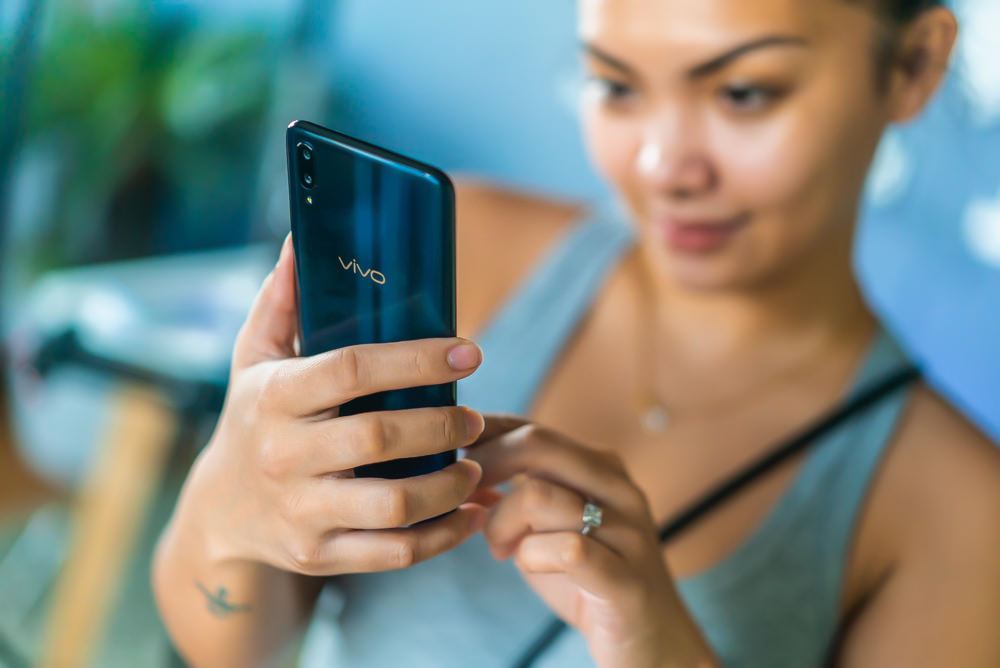
In the hands, the feels just like the X21. It has a glossy finish which looks nice until it gets filled with fingerprints. Good thing Vivo included a jelly case in the package. It’s solid, easy to grip, and feels really thin which can be attributed to its tapered sides.
By now you might already notice the redesigned notch which is significantly smaller compared to the X21. Vivo calls this the Halo FullView Display. The quality is good with nice viewing angles. The colors are punchy while the blacks are deep thanks to the Super AMOLED screen.
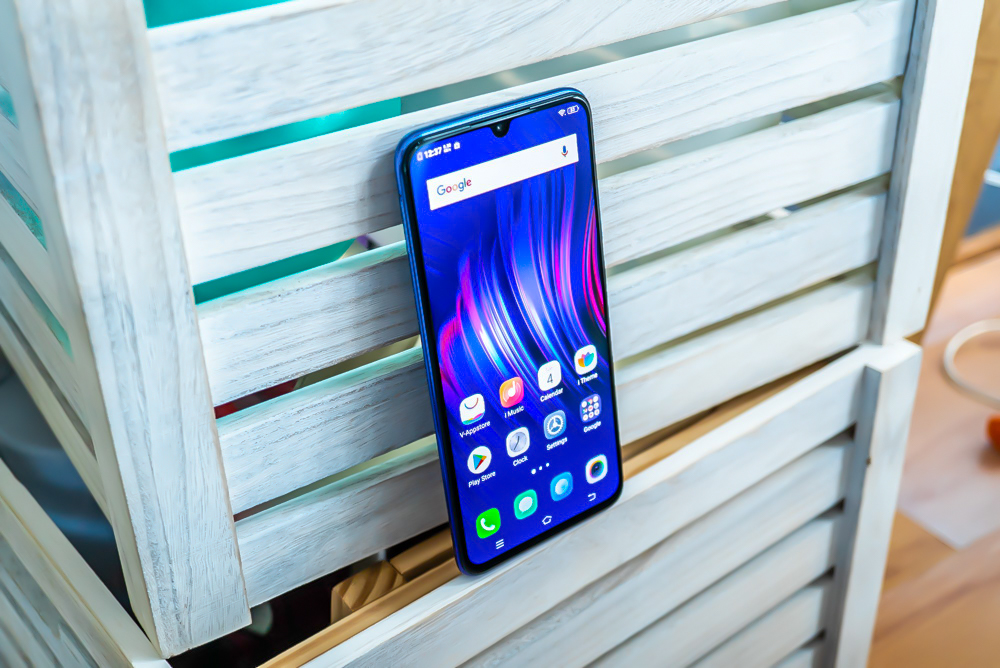
The viewing experience is good since we’re getting more screen and fewer bezels which is an advantage when watching videos, gaming, or viewing photos. If you’re worried about the notch, the V11 does not have an option to hide it. However, the apps are displayed in their default display ratio that doesn’t extend towards the notch, but you also have the option to have them displayed in full-screen.

For the audio, the V11 has a single down-firing speaker. Like with most mid-range smartphones nowadays, it’s crisp and loud, so if you’re just casually watching videos, listening to music, or playing games, this will suffice. But if you want a better listening experience, it’s best to plug a good pair of headphones via the 3.5mm audio port.
The V11 is equipped with a 12MP (f/1.8) + 5MP (f/2.4) dual rear cameras and 25MP (f/2.0) front. The cameras come with standard features like Doc mode, Professional, Panorama, AI Face Beauty, AR Stickers, HDR, Google Lens. It also has AI Portrait Framing that is also found on the Vivo NEX. What it does is it analyzes the scene and tells you where to center the camera for a better-composed shot.

Jovi, VIVO’s version of an AI companion, upgraded the phones cameras by transforming the normal face beauty into AI. This is why you’ll notice we have the beauty options on quick toggle whenever it’s available.

When it comes to quality, the V11 can capture photos with plenty of details with good contrast. Colors are also punchy although we find its processing to be on the warmer side. Selfies, as expected are good with sharp details and accurate colors. The beauty effects implemented come out natural and don’t look artificial. Check out the samples below.
As for others, we have the Bokeh effect which can simulate f/16 to f/0.95 apertures; AI scene recognition; AI Face Beauty which allows you to manually edit your photo and apply effects face whitening and thinning; and Selfie Lighting with six modes: Natural Light, Studio Light, Stereo Light, Loop Light, Rainbow Light, and Monochrome Background.
When it comes to video recording, the V11 can only shoot at a maximum of 1080p at 30fps. It also has a Video Face Beauty feature but lowers the resolution to 720p. There’s no video stabilization so footages can come out shaky. Watch the sample below.
The Vivo V11 runs on Funtouch OS 4.5 based on Android 8.1 Oreo. The interface is similar to the X21 and uses multiple home screens to house apps like those from Google and a few from Vivo. You have two options when it comes to navigation: one is via the usual on-screen keys, while the other is gesture-based.
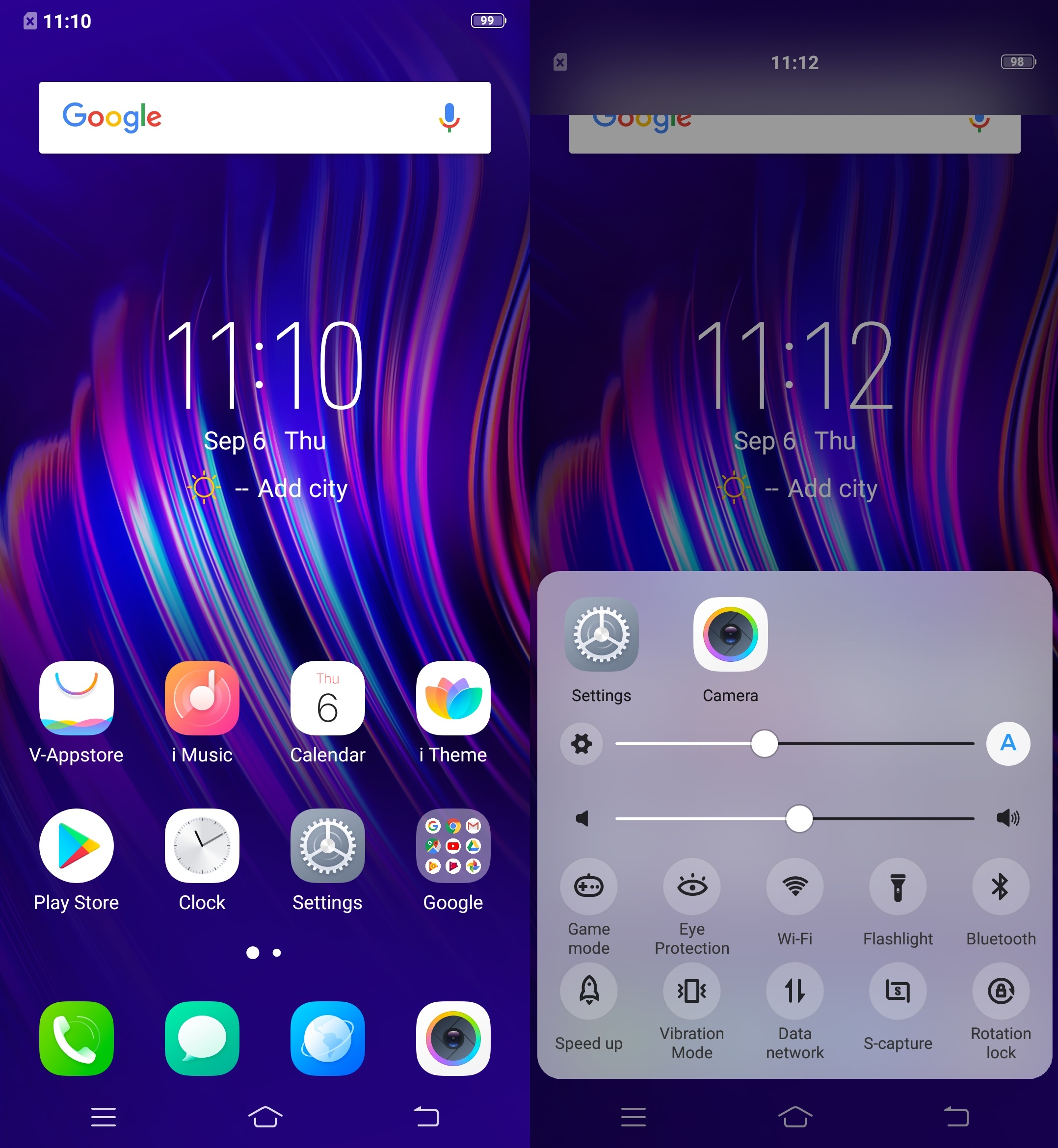
When it comes to features, the V11 has Game Mode, Motorbike Mode, Security and Privacy settings, Smart Split (split-screen), One-handed mode, App Clone, and Smart click which lets you assign commands like launching the camera when you press and hold the volume down button.
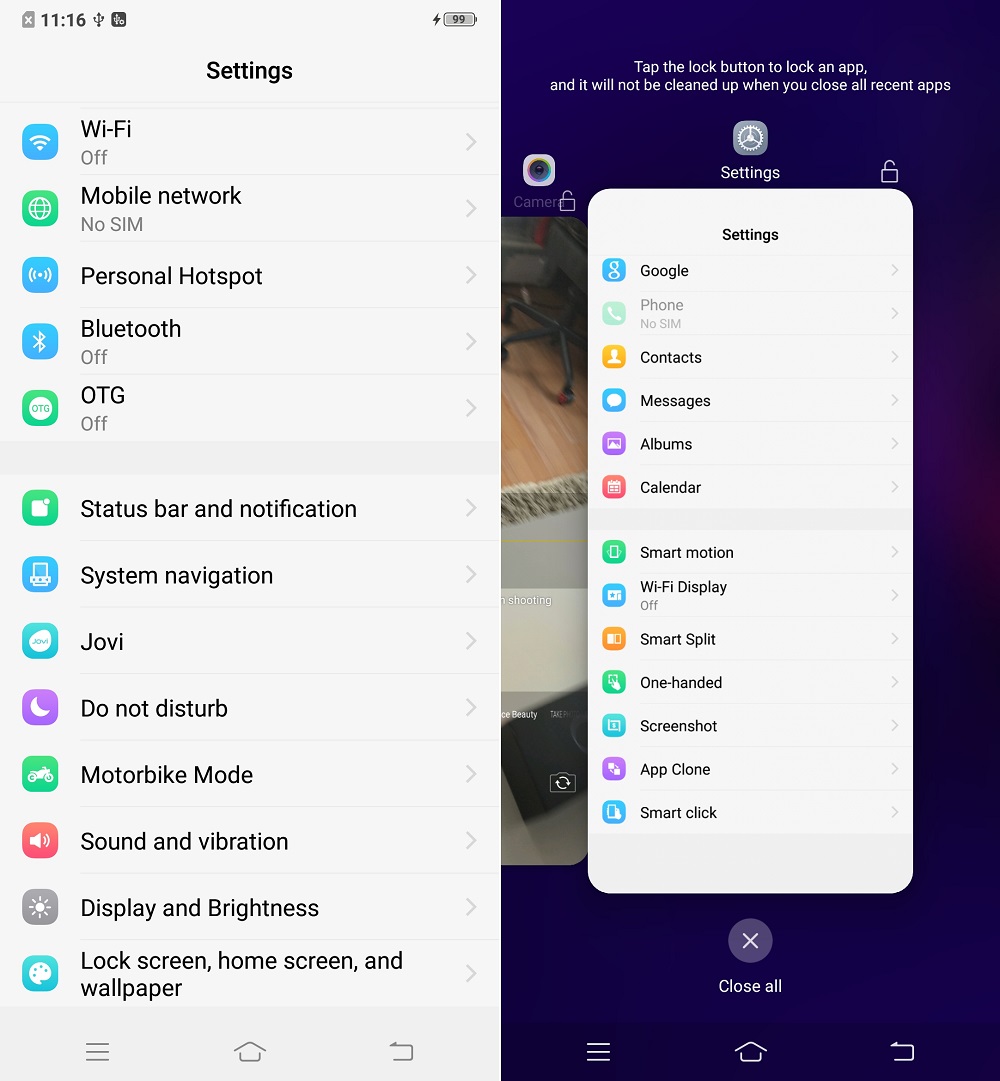
Storage-wise, the V11 has 64GB of storage with 49.49GB left for the user. This is a good starting storage but if you want more space, there’s support for USB OTG and a dedicated microSD card slot that can accommodate up to 256GB cards.
Powering the device is a Qualcomm Snapdragon 660 octa-core chipset, Adreno 512 GPU, and 6GB RAM. This is a mid-range chipset but with an above average RAM capacity. So far, performance is good and can handle all the tasks we throw at it including gaming. Multitasking is not a problem and was able to hold plenty of background tasks without choking. Switching between those apps are also quick and responsive. We can even game without having to clear background tasks.

Jovi, the AI feature we found on the NEX, is also here. However, it doesn’t work as an AI assistant but more like an engine that helps in the camera and gaming performance. One of the things it’s responsible for is Game Mode which automatically optimizes CPU and RAM usage once you open a game that’s on the list. After that a prompt for additional settings appears — a button for auto-rejecting calls, removing the background call option and blocking pop-up banner notifications. Do take note, to take advantage of all of this you have to add the game to the list via Settings – Jovi – Game Mode – Add.
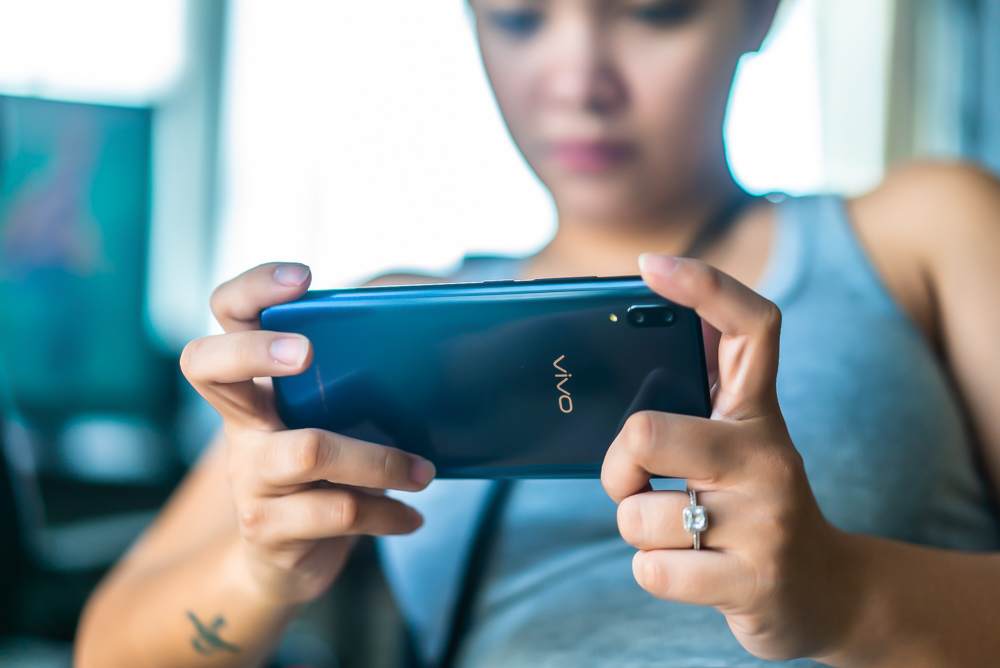
When it comes to thermals, heating is not an issue as during testing the device only reached a maximum of 33-34-degrees, which is close to body temperatures. I’m also getting decent numbers in our benchmark tests but they’re lower than what we got on the Vivo X21 UD. They’re Check out the results below:
The Vivo V11 got the basic connectivity features which include dual-SIM with 4G LTE, WiFi, Bluetooth, and GPS. It still uses a micro USB port so it may be a downer for some who are looking forward to the USB Type-C. So far, everything is working well as the calls are loud and clear, mobile data connects right away, while apps like Google Maps and Waze have no problems finding our location.
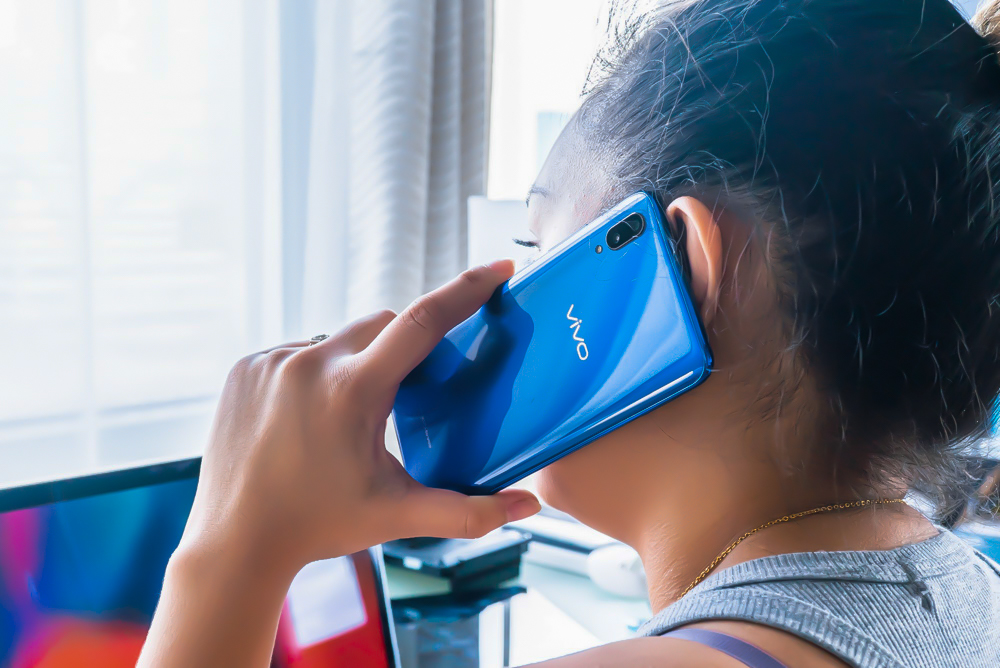
Compared to the X21 UD and V9, the V11 has a slightly larger battery capacity at 3,400mAh. It was able to last us a whole day of constant WiFi connectivity, heavy social media, and moderate photography and gaming, but this can vary depending on how you use it. In our video loop test, we got 17 hours of playback which is the same mileage we got from the X21 UD, which is still not bad. The Dual-Engine Fast Charging, on the other hand, was able to replenish the empty battery in just 2 hours.
Note: PC Mark crashes during testing. We’ll update this article once we get it to work.
The Vivo V11 packs big improvements over its predecessor, the V9. It has a better and prettier design, nicer display with a smaller notch, and packs more power in terms of hardware and software. Frankly speaking, it actually feels like an X21 UD but on steroids.

It’s a versatile performer that can satisfy those who are fond of gaming or just want to take really good selfies. What probably will make or break this device is the price. Considering the competition, we expect it to be under Php20K. If Vivo can place it well under the said price range, I think the V11 has a good fighting chance.
Vivo V11 specs:
6.41-inch FHD+ (2340 x 1080) Halo FullView Super AMOLED display
2.5D Glass
Qualcomm Snapdragon 660 AIE octa-core CPU
Adreno 512 GPU
6GB RAM
64GB storage
MicroSD up to 256GB
12MP (f/1.8) + 5MP (f/2.4) dual rear cameras, LED flash
25MP (f/2.0) front camera
Dual-SIM
4G LTE
WiFi 2.5GHz / 5GHz
Bluetooth 5.0
MicroUSB 2.0
USB OTG
GPS, A-GPS, GLONASS, BeiDou
In-Display Fingerprint scanner
Face Unlock
3.5mm audio port
Funtouch OS 4.5 (Android 8.1 Oreo)
3,400mAh battery w/ Dual-Engine Fast Charge (9V/2A)
157.91 x 78.08 x 7.9 mm
156 g
What we liked:
• Attractive design
• Good build
• Nice display with smaller notch
• Good performance
• In-display fingerprint scanner
• Good cameras with AI features
• Fast face unlock
• Fast charging
What we didn’t:
• No 4K video recording
• No OIS or EIS
• Slow in-display fingerprint scanner

YugaTech.com is the largest and longest-running technology site in the Philippines. Originally established in October 2002, the site was transformed into a full-fledged technology platform in 2005.
How to transfer, withdraw money from PayPal to GCash
Prices of Starlink satellite in the Philippines
Install Google GBox to Huawei smartphones
Pag-IBIG MP2 online application
How to check PhilHealth contributions online
How to find your SIM card serial number
Globe, PLDT, Converge, Sky: Unli fiber internet plans compared
10 biggest games in the Google Play Store
LTO periodic medical exam for 10-year licenses
Netflix codes to unlock hidden TV shows, movies
Apple, Asus, Cherry Mobile, Huawei, LG, Nokia, Oppo, Samsung, Sony, Vivo, Xiaomi, Lenovo, Infinix Mobile, Pocophone, Honor, iPhone, OnePlus, Tecno, Realme, HTC, Gionee, Kata, IQ00, Redmi, Razer, CloudFone, Motorola, Panasonic, TCL, Wiko
Best Android smartphones between PHP 20,000 - 25,000
Smartphones under PHP 10,000 in the Philippines
Smartphones under PHP 12K Philippines
Best smartphones for kids under PHP 7,000
Smartphones under PHP 15,000 in the Philippines
Best Android smartphones between PHP 15,000 - 20,000
Smartphones under PHP 20,000 in the Philippines
Most affordable 5G phones in the Philippines under PHP 20K
5G smartphones in the Philippines under PHP 16K
Smartphone pricelist Philippines 2024
Smartphone pricelist Philippines 2023
Smartphone pricelist Philippines 2022
Smartphone pricelist Philippines 2021
Smartphone pricelist Philippines 2020
Pocokills says:
Considering the competition, we expect it to be under Php20K. If Vivo can place it well under the said price range, I think the V11 has a good fighting chance. — LOL. Knowing how Oppo and Vivo overprices their phones, this is not going to be under 20k, or maybe around 18k up. Just get the Mi A2 from Xiaomi, same soc, better ui, cheaper than this wannabe. Or if you have extra cash, just get the Poco F1 also from Xiaomi, that phone undercut a lot of releases.
Pettylyn says:
Why so expensive?Can you lower the price please!
philip says:
the hell!? just below 20k though i think it’s better than x21 in a lot of things except the processor and storage. It’s so dissappointing buying x21 when even v7’s front camera is a lot better. vivo should’ve at least made the x21’s front cam the same if not better than v7
Mikado Nick says:
Having the price of the phone at around 20k is not so bad. I mean, it’s a decent phone with all the new features and such. The advancement of technology is rising constantly and that increases its price so its not shocking for most people nowadays.
Arlo says:
i have already that phone, its not worthy to buy, there’s an issue with the battery, it drain’s very fast less than a day the battery is low already. when i go to service center they said they need to test it for one day, this unit is not worth it to buy. its too expensive and not expected as you think.